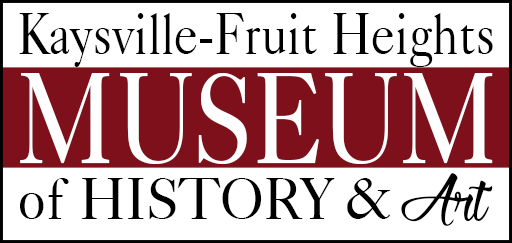LeConte Stewart Art
 Art Education and Professional Experience
Art Education and Professional Experience
Well-known throughout Utah, LeConte Stewart and his art were beloved in his adopted hometown of Kaysville. Stewart, however, was born in the small farming community of Glenwood, Sevier Co., Utah in 1891. He moved to Rexburg, Idaho as a teenager and graduated from high school there.
From an early age, Stewart wanted to be an artist so he studied art at the University of Utah. At the age of twenty-two, he moved to New York State where he studied art under the direction of J. F. Carlson, Frank DuMond, and Walter Goltz three of America’s greatest landscape artists. Stewart’s training under Swedish-born New York artist John F. Carlson helped him to understand the techniques of the finest European schools of art. Through Carlson he learned to master the balance of self-expression.
Stewart returned to Utah where he was hired as a teacher at the Kaysville Elementary School. His move to Kaysville started a seventy-six-year residency in that city. He was an art teacher in Salt Lake, Davis and Weber counties. He headed the art program at Ogden High School for almost twenty years and then in 1938 became the chairman of the Art Department at the University of Utah. He was at the U of U for eighteen years, retiring in 1956.
Critical Analysis and Painting Philosophy
According to the curator of an exhibition shown by the Church of Jesus Christ of Latter-day Saints in 2011, the expressive quality shown in LeConte Stewart’s works was uncontrived and natural. His mood and the method that followed was recognizably authentic. “He did not like pretense or presumptuousness … he was ‘take it or leave it’.1” Because Stewart’s art came from his strong connection to the landscape, his love of the land is readily experienced in his prolific catalog. Said curator Robert Davis, “the soul being projected by him through landscapes, sharing the spiritual through the visual,1” makes each powerfully relevant to those who view his works. “A painting is just a painting unless you capture the spirit of what’s being painted – and then its real art,” said the Kaysville artist when he was asked about his lifetime dedication to art.
Stewart was primarily known for his landscapes of rural Utah – especially scenes in Davis and Morgan counties. Throughout a career that spanned more than eighty-five years, he capturing the spirit of the countryside in many mediums. Those who lived in Kaysville were used to seeing his easel set up by the side of the road, often with a student seated beside him. As locals view his scenes, they will recognize the character of the town and the mood of countryside they shared with the artist. Every art enthusiast, though, can view as well as experience his love for the land without having lived or visited any of the locations.
When invited to paint one painting for Ogden’s bicentennial art exhibit in 1976, he responded that it was an honor to be included. This humble attitude was familiar to friends and neighbors, but not one that might be expected of someone whose extensive exhibition in the LDS Church History Museum in 2011 was mounted in conjunction with another large show. Unlike the landscapes shown in the partner exhibit The Spirit of the Land: LeConte Stewart Landscapes, The Utah Museum of Fine Art’s LeConte Stewart: Depression Era Art revealed the ‘raw side of life’ in expressions “stripped to the essential depictions of storefronts, gas stations, and old homes. One critic asserted that one finds a different Stewart with “a fighting spirit of unity with the common man.2”
His ability to master different styles in a variety of mediums, his willingness to share his craft contribute to the reputation.
Sources
- “LeConte Painting.” Anderson, Robert, photographer, ca. 1980.
- Marion, Linda, “LeConte Stewart’s West,” Winter 2009.
Citations
- Clark, Ehren, “Spirit of the Land: LeConte Stewart landscapes at the LDS Church History Museum,” 15 Bytes: Utah’s Art Magazine, August 2011.
- Clark, Ehren, “Spirit of an Era: LeConte Stewart’s Depression Era Paintings,” 15 Bytes: Utah’s Art Magazine, September 2011.
Note
A gallery of some of Stewart’s rural art can be found online at “LeConte Stewart: The Soul of Rural Utah. The Church of Jesus Christ of Latter-day Saints.” Gallery of rural art.
